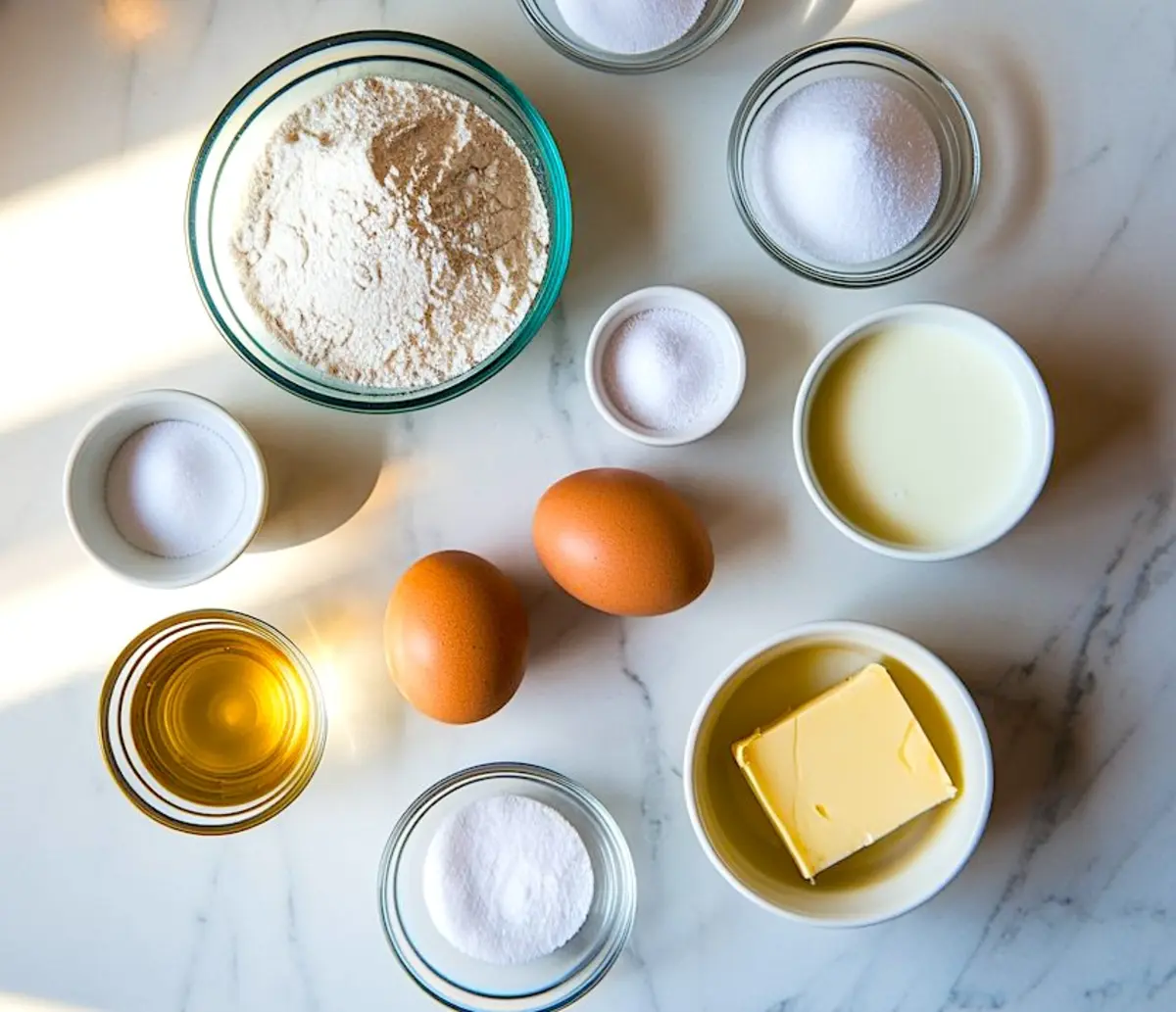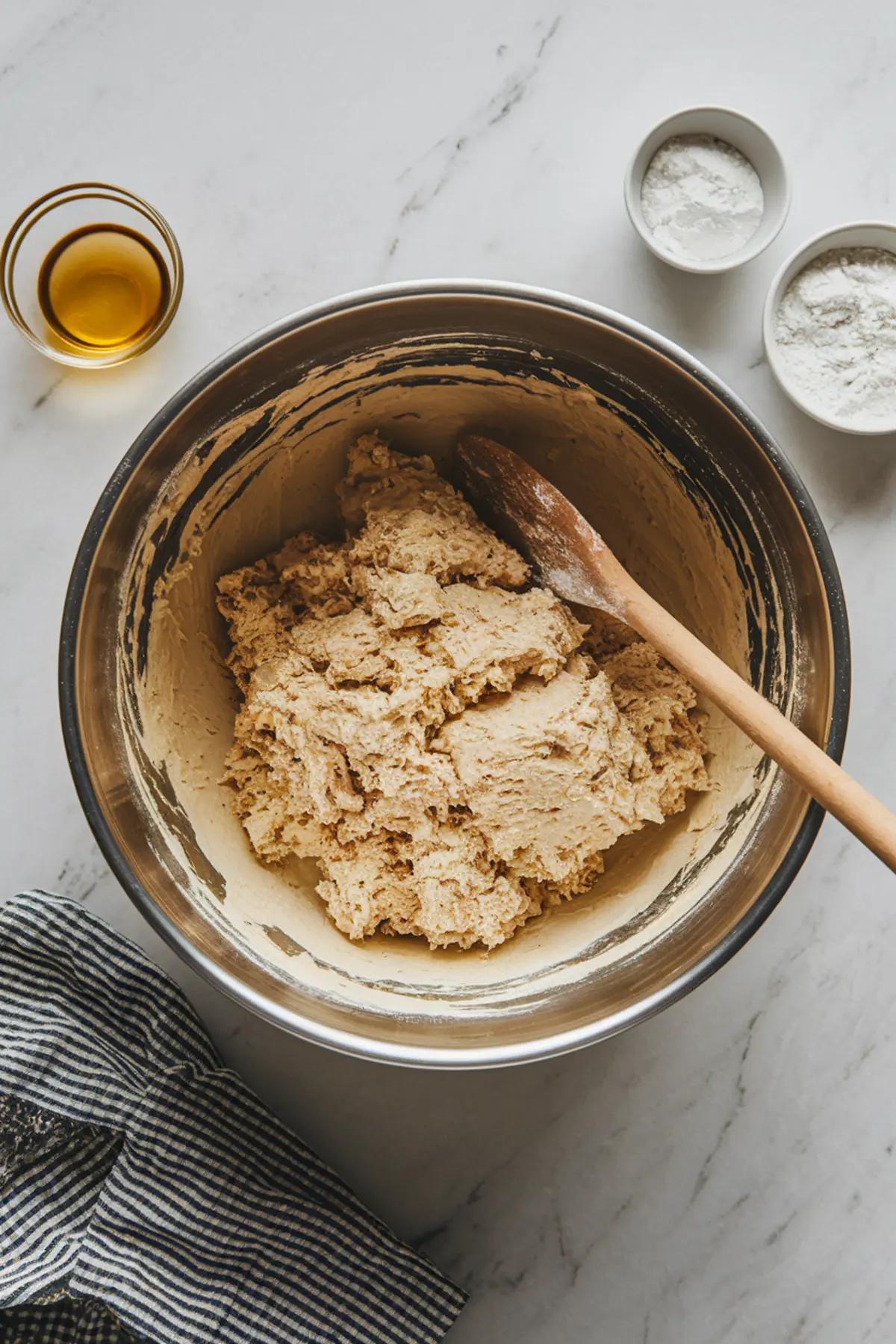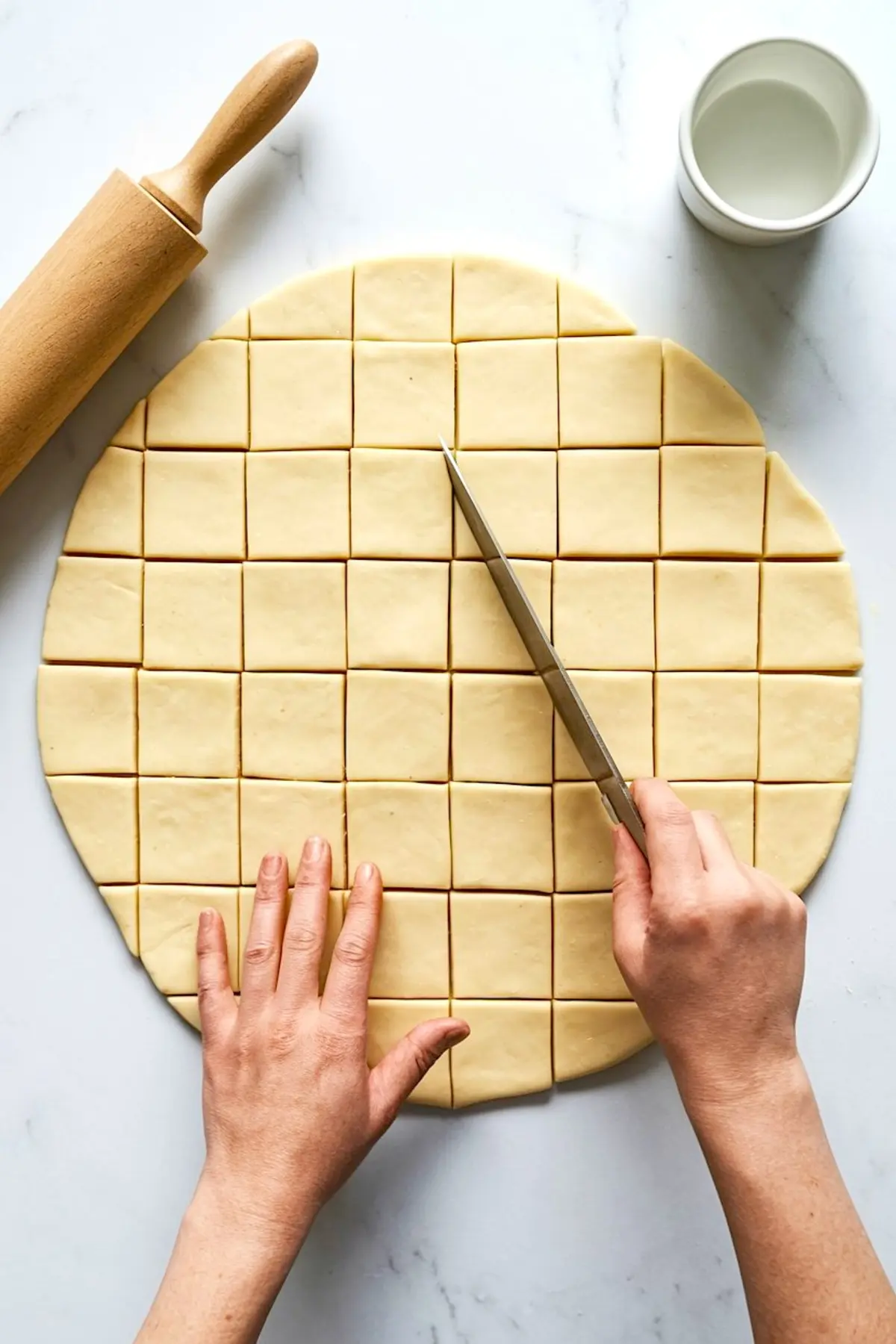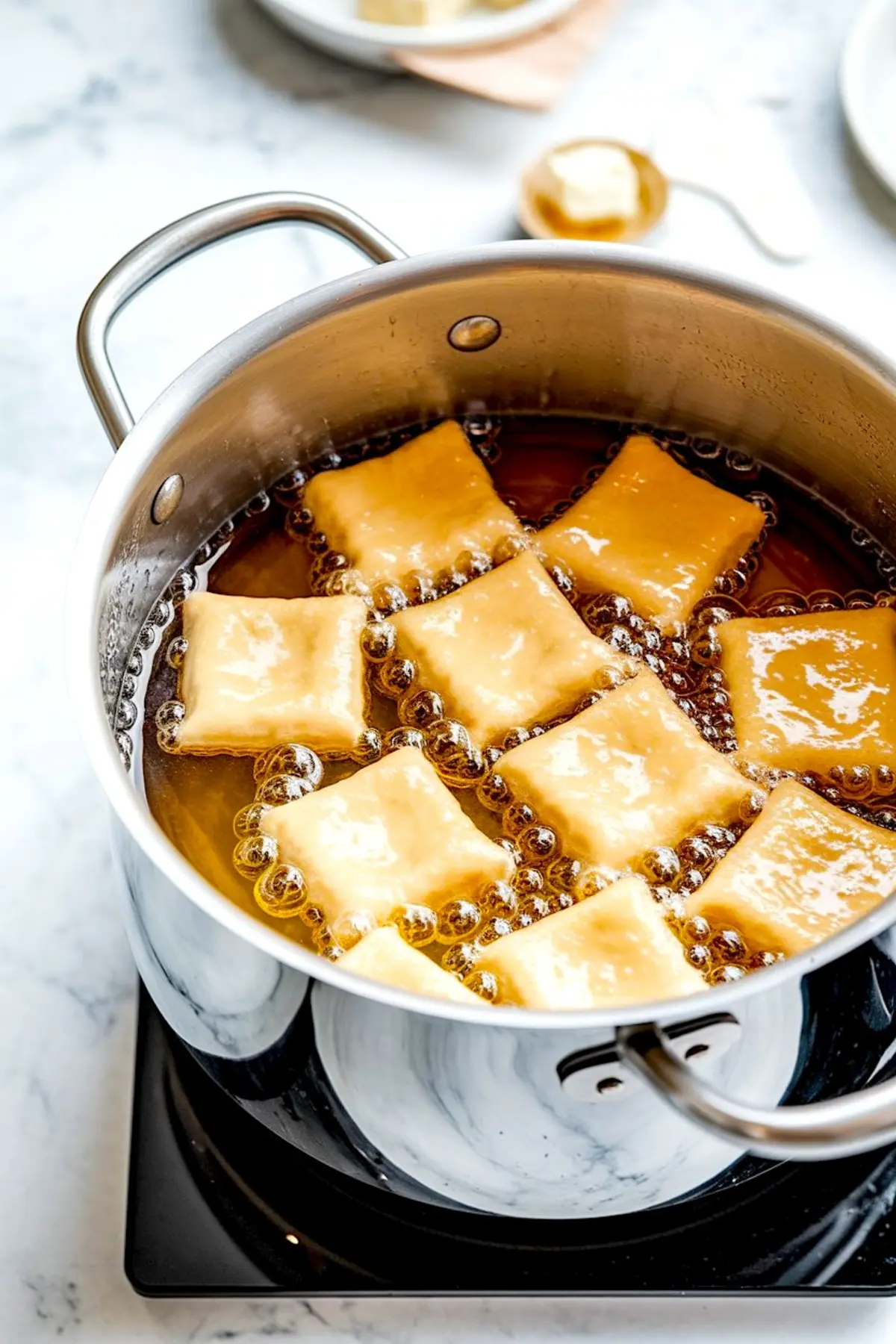There’s a quiet kind of magic when warm beignets hit the table. Powdered sugar falls like fresh snow, the dough gives the lightest pull, and that first bite melts before you realize it.
I’ve tested these New Orleans-style beignets many times. The result? A recipe that removes the guessing, gives you confidence, and delivers the real café experience right in your kitchen.
You’ll leave with clear steps, no confusion, and answers to the little questions that often stop people from making these at home.
I want you to feel ready. These beignets won’t just work. They will shine.

Why This Beignets Recipe Works (And Why Most Don’t)
Most people either overcomplicate beignets or oversimplify them. Some rush the yeast, others drown the dough in flour. Many skip details that change the entire texture.
This recipe balances tradition with technique.
You will learn how to activate the yeast properly. You will understand when your dough feels ready, instead of guessing. And you will see how the oil temperature affects every single batch you fry.
These steps protect the structure while keeping the inside cloud-soft. The outside stays crisp, never tough or greasy.
Ingredients That Make The Difference

The base starts with all-purpose flour. I’ve tested bread flour before. It gives stronger gluten but removes the tenderness. Stick to all-purpose here for that signature light pull.
Active dry yeast needs the right temperature water to wake up. I always use my thermometer. Water at 110°F activates the yeast without killing it.
Whole milk adds richness. I’ve used 2% before. The result felt thinner, less satisfying. The whole milk version always delivers better flavor and structure.
Unsalted butter gives control over salt levels. Combined with one egg, it creates a dough that stays tender even after frying.
And finally, powdered sugar transforms these little squares into the classic New Orleans look we all crave.
The Essential Step: Activating The Yeast Correctly
Yeast fears two things: cold and heat. Water too cool will leave it sluggish. Water too hot will kill it.
In my kitchen, I mix warm water and sugar first. Sugar feeds the yeast, helping it bloom faster. Once I sprinkle the yeast, I leave it undisturbed for up to 10 minutes.
Foam on the surface tells you the yeast has come alive. If you don’t see foam, stop. Start fresh. Active yeast means airy beignets later.
How To Mix And Knead The Dough

Once the yeast blooms, I stir in the warm milk, beaten egg, melted butter, and salt. Only then do I add flour gradually.
Adding flour too fast will stiffen your dough too early. I add about one cup at a time, stirring gently until I reach a soft, slightly sticky dough.
The kneading stage matters. I move it to a lightly floured counter and knead for about seven minutes. You want the dough smooth and elastic but not tight. If it snaps back sharply, it needs a minute more.
Why The Rise Time Matters

Many rush this stage. Beignets need patience to develop that airy structure.
I place the dough in a lightly greased bowl, cover it, and let it rise for about two hours. In colder months, I use my oven’s proof setting or place the bowl near a warm window.
The dough should double in size. This rise allows flavor to build while preparing the gluten network for frying.
Rolling, Cutting, And Shaping The Beignets

After rising, I gently punch down the dough. I roll it into a rectangle about ¼ inch thick. This thickness gives the beignets enough space to puff during frying without becoming hollow inside.
I cut the dough into even 2-inch squares. A pizza cutter works better than a knife because it slices cleanly without tugging.
How To Fry Beignets Correctly (This Controls The Texture)

Frying controls everything from puff to crispness.
I use vegetable oil heated to 350°F. I check the temperature with a thermometer before each batch. Oil too cool makes greasy beignets. Oil too hot browns them too fast while leaving the inside doughy.
I fry just a few at a time. Crowding drops the oil temperature.
Each beignet gets about 2 to 3 minutes per side. They should puff and turn golden brown evenly.
Once fried, I remove them with a slotted spoon and drain them on paper towels.
Dusting With Powdered Sugar: The Right Moment
The beignets must stay warm for the sugar to cling. I sift powdered sugar generously over them right after draining.
The warmth melts a thin layer of sugar while keeping the top snowy and light. Cold beignets won’t hold the dusting properly.
One Key Comparison: Frying Vs. Air Fryer Beignets
In my notes, I’ve tested both frying and air fryer methods.
Traditional frying gives the true New Orleans texture: crisp outside, tender inside, perfect puff.
Air fryer beignets come out lighter with a drier bite. The convenience is clear, but the texture loses that café richness. For the full experience, I always return to oil frying.
Serving Suggestions And Presentation Ideas
Serve these homemade beignets immediately. A hot cup of coffee or chicory blend matches the soft sweetness beautifully.
For smaller gatherings, I sometimes make mini donuts ideas from the same dough. Just cut smaller squares and adjust the fry time slightly.
If you want presentation inspiration, look through my beignets aesthetic boards. Simple white platters dusted with extra sugar always photograph beautifully.
You can also explore more donut aesthetics by trying recipes like my Homemade Glazed Chocolate Donuts, or experiment with flavors like my Double Chocolate Donuts and White Chocolate Donuts.
Storing The Dough And Leftovers
Beignets taste best within minutes of frying.
If needed, you can refrigerate the dough after the first rise. I do this often when preparing ahead for brunch. Before rolling, let the dough sit at room temperature for 30 to 45 minutes to relax.
Leftover fried beignets lose their texture quickly. If you must store them, place in an airtight container and reheat briefly in a low oven. But nothing matches the fresh batch.
Common Reader Questions Answered
Is this like the Cafe Du Monde Beignets Recipe?
Yes, this recipe aims for the same light, square shape and generous sugar coating you find at Cafe Du Monde.
Can I bake these in a donut pan?
Baking changes both structure and texture. Baked donuts with donut pan create a cake-like crumb. Beignets rely on oil for their signature puff and delicate bite.
Is this recipe considered beignets facile et rapide?
For beignets, this method balances tradition with simplicity. The hands-on time stays minimal while keeping results authentic.
Save And Share

Go ahead and save this recipe on your Pinterest board so you have it ready the next time you crave New Orleans beignets.
I’d love to hear how your batch turns out. Share your experience in the comments or drop any questions you have. Let’s bake together.
Beignets Recipe

New Orleans-style beignets are light, square-shaped fried doughnuts generously dusted with powdered sugar. They are crisp on the outside and soft, airy on the inside. This classic recipe uses simple ingredients and traditional techniques to recreate the famous café treat in your own kitchen. Enjoy them fresh and warm with a cup of coffee.
Ingredients
- 3 ½ cups all-purpose flour, plus extra for dusting
- 1 packet (2 ¼ teaspoons) active dry yeast
- 1 cup warm water (110°F)
- ¼ cup granulated sugar
- ½ cup whole milk, warmed
- 1 egg, lightly beaten
- 2 tablespoons unsalted butter, melted
- ½ teaspoon salt
- Vegetable oil, for frying
- Powdered sugar, for dusting
Instructions
- ACTIVATE THE YEAST: In a large bowl, stir together the warm water and granulated sugar until dissolved. Sprinkle the yeast over the surface and let it sit for 5 to 10 minutes until the mixture becomes foamy, indicating that the yeast is active.
- MAKE THE DOUGH: Add the warm milk, egg, melted butter, and salt to the yeast mixture. Stir to combine. Gradually mix in the flour, about 1 cup at a time, until a soft dough forms. Transfer to a lightly floured surface and knead for 5 to 7 minutes until the dough is smooth and elastic.
- LET IT RISE: Place the dough in a lightly greased bowl. Cover with plastic wrap or a damp cloth and let it rise in a warm place for 1 ½ to 2 hours, or until doubled in size.
- ROLL AND CUT: Punch down the dough and turn it out onto a lightly floured surface. Roll into a rectangle about ¼ inch thick. Use a sharp knife or pizza cutter to cut the dough into 2-inch squares.
- HEAT THE OIL: In a deep pot or fryer, heat vegetable oil to 350°F. Use a thermometer to monitor the temperature. Fry a few dough squares at a time, turning occasionally, for 2 to 3 minutes per side or until puffed and golden brown. Remove with a slotted spoon and drain on a paper towel-lined plate.
- DUST WITH POWDERED SUGAR: While the beignets are still warm, generously dust them with powdered sugar using a sifter or fine-mesh strainer. Serve immediately.
Notes
Beignets are best enjoyed fresh. If needed, you can refrigerate the dough overnight after the first rise, then bring it to room temperature before rolling and frying.
Nutrition Information
Yield
24Serving Size
1Amount Per Serving Calories 114Total Fat 2gSaturated Fat 1gTrans Fat 0gUnsaturated Fat 1gCholesterol 11mgSodium 50mgCarbohydrates 21gFiber 1gSugar 7gProtein 2g

